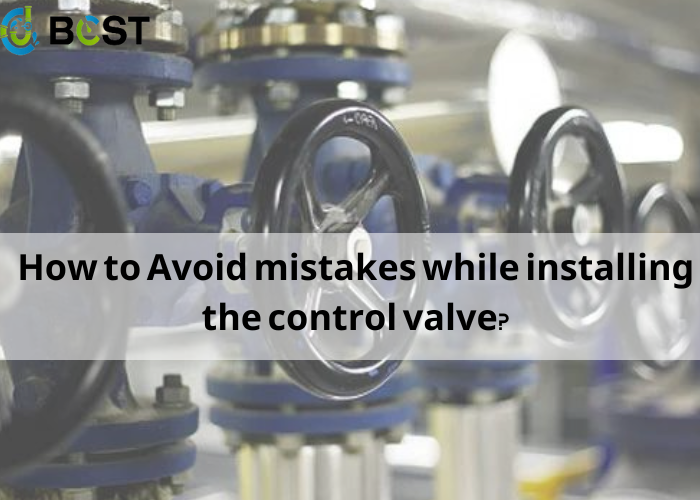
A control valve is a regulating device used to manipulate and regulate the pressure flow of various materials used in industry. These materials include steam, gas, hot water, and different chemicals, which are then processed to produce final products. In industries, the control valve is an essential component of the control process loop that ensures quality production by keeping the variables at the desired set point. Different sensors and detectors are employed to collect minute changes, which are supplied to control valves via various software.
Behind the efficient operation of a control valve is a complex assembly process that few people know. A typical control valve assembly line comprises the main body, internally trimmed components, and an actuator that supplies electrical/pneumatic power to the control valve. The accessories of the control valve will vary and change according to the industry in which they are used, including flow pressure regulators, sensors and limit switches, etc.
Why is a Control Valve Required?
A working industrial facility comprises hundreds of control loops that run in the background and are responsible for the plant’s flawless operation. These control loops are separated into groups, and each group manages a particular variable, such as flow rate, pressure, temperature, material level, and so on. These loops interact with one another to keep the whole process running at the correct speed.
Because all these loops are coordinated to form a mesh, load disturbances can occur while controlling variables. As the last leg of the loop, the control valve is responsible for correcting this load disturbance in the aftermath of such an occurrence. As a result, the control valve of each control loop is responsible for maintaining the industrial plant in the proper state to ensure excellent product manufacturing throughout the process.
How Does a Control Valve Work?
A control valve is the most underappreciated yet crucial component of the control loop in the mechanical sector. Any errors in the control valve selection result in a decrease in product quality or an interruption in the services provided by the industrial plant. A typical control loop consists of the following elements: Sensor, Transmitter, and Controller.
Various types of sensors can be used depending on the nature of the industrial facility. Load disturbances are detected by the detector and sent to the collector through transmitters. The control unit in the automated control loop has fixed conditions of process variables for operating the plant. This retrieved data is compared to previously selected process variable conditions, and a corrective signal is generated if necessary. This correction signal is subsequently sent to the control loop’s control element, which involves in-process monitoring. In summary, sensors serve as eyes, transmitters serve as messengers, collecting units serve as brains, and the final control element serves as the hands of a control loop.
Factors to Consider when Installing Control Valves
As previously stated, the control valve is just as vital as the other physical components of a control loop. In addition, the efficiency of the control valve directly impacts the overall profitability of the industrial unit. As a result, installing the Control valve is critical, and any faults during its installation result in plant failure, regardless of how advanced machinery was built in this plant.
Following the manufacturer’s installation guide and cautions will result in the accurate operation of the control valve. The following sections will highlight some of the most common errors when installing these control valves.
Adhering to the Instructions Manual
Before installing a valve in the control loop, it is best to read the instruction booklet. The manufacturer describes most of the recommendations, do’s and don’ts, and safety measures in depth in the instruction manual. By carefully following the instructions, one can avoid any mishaps during or after the Control valve installation.
Control Valve Inspection
Regardless of the precautions taken by the makers during the production and transportation of the control valve, any damage during shipment and loading/unloading is conceivable. Because different firms give a warranty on the goods before installation, a thorough check before installation can save you time and money. Before installation, properly inspect the control valve by removing any packaging and shipment stamps.
Before installing valves, the pipeline must be thoroughly cleaned
Before installing the Control Valve, inspect the pipe ends for any damage, cuts, or the presence of any foreign material such as metal flakes, welding slag, and so on. The Control Valve’s sitting surface may be destroyed in the above conditions—excessive effort during installation to overcome a stumbling block results in valve fracture or impeded tightening. As a result, the control valve does not tighten properly, and leakage occurs.
Sealant Application
Use a suitable sealant if the valve has screwed connections on the end for installation. Failure to do so will result in the valve becoming loose and leaking gas or liquid shortly. Also, use sealant on male pipe threads rather than female pipe threads, as the sealant substance will penetrate the valve body if force is applied during tightening. This penetration causes the valve to stick, and dirt coagulation causes the control valve to shut down.
Orientation of the Control Valve during Installation
Control valve installation can be done in any position, depending on the kind and nature of the piping material. However, the most recommended installation form is the vertical installation method, in which the actuator is oriented vertically relative to the valve body. Horizontal placement places additional weight on top works and internal trims, pushing the valve stem in one direction. This aberrant motion will cause the valve assembly to wear, break, and leak prematurely.
Tightening the Flanged Connection between the Control Valve and the Piping in a Star Pattern
If the control valve comes with nuts and bolts, always tighten them in the star pattern, just like we do with automobile tire bolts. The Star pattern offers an excellent seal and resists leakage compared to the one-sided pattern.
Please contact us at https://bcstgroup.com/ if you have any questions.






